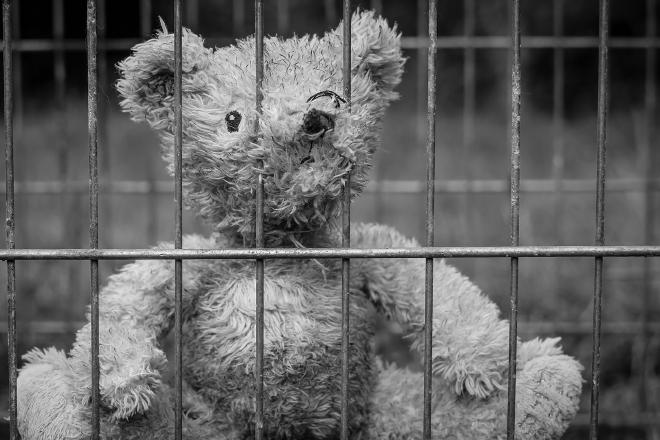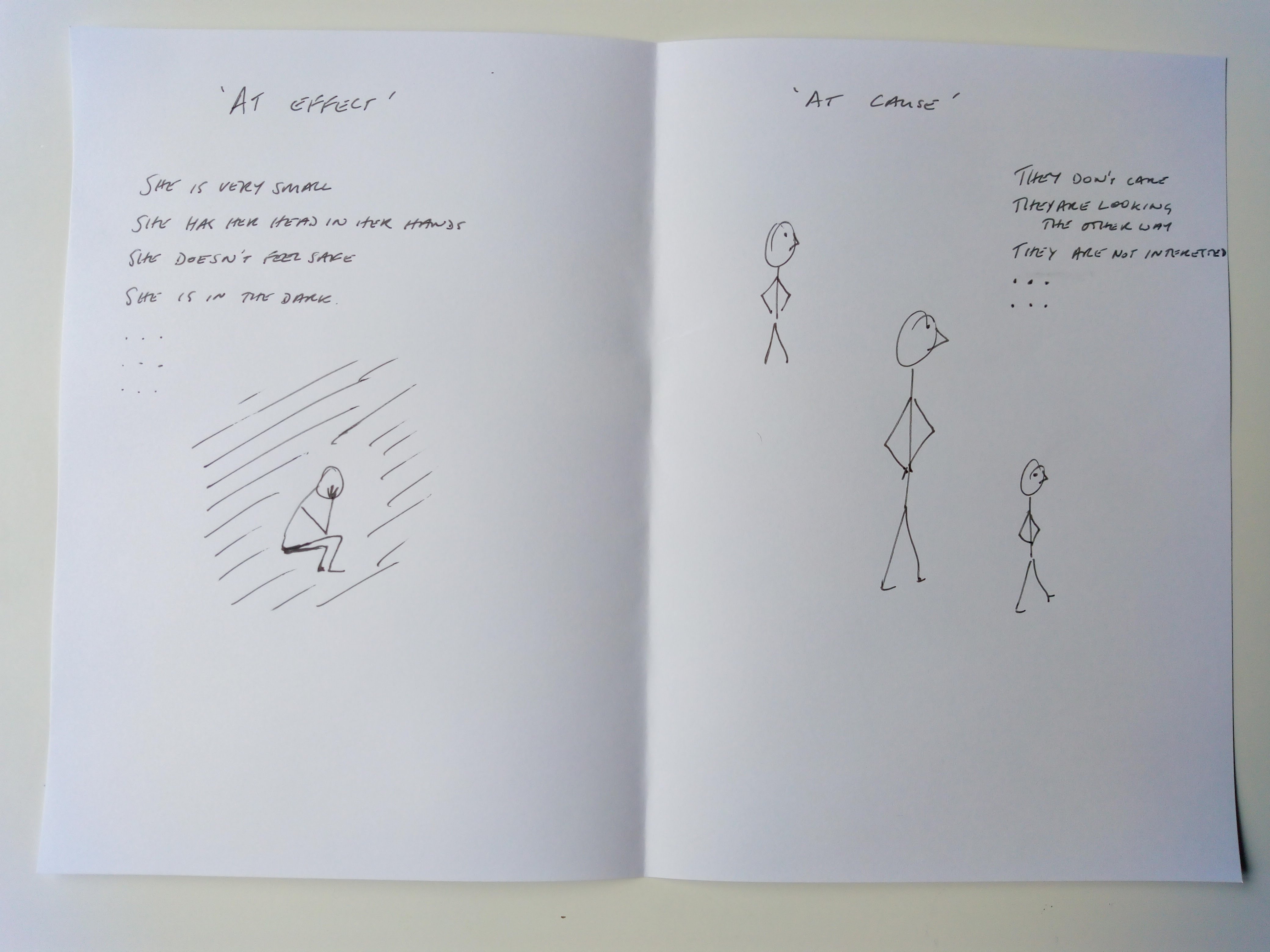Tapping For More Freedom

Being ‘at cause’ means we are resourceful, capable and able to act to influence our lives and we know that we can influence the course of our lives.
But sometimes, we might feel as though we are at the mercy of events or other people, things happen to us and there is nothing we can do to influence our lives. In other words we are ‘at effect’ in our lives.
When we are ‘at effect’ the world does things to us and we can’t change anything. Other people and circumstances control our lives, we might feel we are powerless and can’t influence what happens to us. We are a hostage to other people and circumstances.
Some of the symptoms of being at effect are:
- Feeling like a victim of circumstances or other people.
- Being passive, waiting for someone else to get things moving
- Needing permission from other people to take action.
Being at effect can also show up in how we speak.
- “There is nothing I can do until they ….”
- “My family run my life”.
- “I have to wait until they …”
- “I need my mother’s approval”
- “I can’t move on until he apologises for what he did”
- “I am a coach and I’m waiting for new clients to ask me for the help they need, but they never show up.”
- etc
When we hear other people (or ourselves) say things like this it indicates that they are ‘at effect’ in this area of their lives. They are telling us that someone else is responsible for how they think and feel and what they do.
Being at effect is a good way to keep chronic emotional problems going indefinitely. If you make other people or circumstances the cause of your problem there is nothing that you can do to change things because they are in control. If they have to change for you to get better, you could be in for a very long and probably unhappy wait.
By now you might be thinking that some people [insert favourite oppressor here] really are causing you physical or emotional distress. It’s true, there are certainly limits and constraints in the physical world and there are people using and abusing power in our social and political worlds. However, all those factors make themselves known through our subjective personal experience. How we respond to them will affect our experience of them and how we choose to act.
‘Everything can be taken from a man but one thing: the last of the human freedoms: to choose one’s attitude in any given set of circumstances, to choose one’s own way.’ - Viktor Frankl - concentration camp survivor.
Liberté, égalité, fraternité … or not!
The French national motto: Liberté, égalité, fraternité - freedom, equality and fraternity - describes the state of being at cause.
- Liberty: Having the freedom to act
- Equality: Having as much power and influence as everyone else
- Fraternity: Being in a state of goodwill, wanting the best for ourselves and others without impinging on their freedom or equality.
Being at effect is the opposite.
- Constraint: Feeling boxed in by real or imaginary limitations.
- Powerlessness: The other people or circumstances have, or seem to have, all the power.
- Vulnerability: The people holding the power do not have your interests at heart or may even be hostile towards you.
What can we do to change this?
Fortunately you don’t need to storm the Bastille or behead members of the nobility to reclaim some of your personal freedom, equality and fraternity.
Stepping out of the predicament
One of the problems of being at effect is that if you are in that predicament it can be quite hard to spot, because this may be the ’normal’ state of affairs for you and you are on the inside of the problem looking out.
It’s hard to read the label if you are inside the jar!
One way of getting outside the jar is to work with a skilled practitioner who is able to see and hear when you are at effect and help you work through it.
Another way to is using drawing to create a tappable metaphor.
All you need a piece of paper and pencil and the willingness to do some tapping.
If you started to panic when I mentioned drawing … relax … this isn’t art school! You do not need to be able to create a Rembrandt or Van Goch of your situation to get the benefit. A simple diagram with stick figures will work really well.
Here’s the kind of diagram that I use:

As you can see Leonardo Da Vinci has nothing to fear from me.
This process consists of two parts:
- Defusing the situation, identifying the stress and distress in that situation and resolving it with tapping. Clearing the feelings and beliefs that hold you at effect.
- Infusing resources that will help you be different in that situation. After the stress and distress has been soothed it’s much easier to tap for the resources that would help you handle things differently.
Instructions
WARNING: If your being ‘at effect’ is the result of historical or continuing trauma and abuse you need to work with that first. Find a practitioner who knows how to work with these kinds of issues and resolve them before you consider using this process
This process can be used for everyday situations where you feel ‘at effect’ in your life.
Part 1: Defusing The Situation
- Pick a situation in which you feel you are ‘at effect’
- Take a piece of paper, divide it in half. On one half draw a stick figure diagram of yourself (at effect) and the other half the person or persons (at cause)
- On the ‘your half’ list all the qualities and feelings of the stick figure of yourself in that situation. For example:
- “she is very small”
- “she has her head in her hands”
- “she doesn’t feel safe”
- “she is in the dark”
- etc
- On the other side of the paper write a list of all the qualities of that person / those people / the circumstances that affect you. For example:
- “they don’t care”
- “they are looking the other way”
- “they are not interested”
- etc
- Tap for the ‘at effect’ you, using tapping in the third person to process all the qualities of that you. â€
- “Even though she is very small, I deeply and completely accept her … she is very small”
- “Even though she has her head in her hands, I deeply and completely accept her … she has her head in her hands”
- etc
- Check the page to see if there are any signs of stress and distress - do more processing if necessary.
- When all the stress and distress has been soothed, ask yourself the question “What would it be like to be that me in that situation, now?”
Important: One of the reasons for drawing a representation of yourself is to help you step back from the problem and look at yourself as if you were another person. From this detached perspective it’s much easier to see what is going on.
Your stick figure self now becomes your stand-in and when you tap you formulate the tapping as if it was for someone else. Rather than tapping on “Even though I am very small … etc”, you tap on “Even though she is very small … etc”. You could think of it as surrogate tapping for yourself.
Now that the stress and distress in the situation has been defused you can move on to the second part
Part 2: Infusing Resources
- Look at the ‘you’ in the picture.
- What does that ‘you’ need to be more capable?
- Emotions - what feelings do they need - e.g. courage, acceptance, determination, etc
- Capabilities - what abilities would help them - e.g. the ability to speak up, the ability to stand firm.
- Write a list of resources that ’s/he’ needs. For example
- courage
- confidence
- the ability to speak up
- etc
- For each resource use the following tapping sequence based on Paradoxical Tapping to work with that ‘you’
- Tapping on the eyebrow point “In how many different ways could s/he be more [resource]”
- Silent tapping on all other points
- For example:
- “In how many different ways could she have more courage”
- “In how many different ways could she feel more confidence”
- “In how many different ways could she speak up for herself”
- etc
- When you have the feeling that the ‘other you’ has been resourced, ask the question: “What would it be like to be that me in that situation now?” ‡
‡ At the start of the process you distanced yourself from ’that you’ and the situation by drawing the picture. This allowed you to tap out the distress on behalf of that ‘other you’ and then resource that you so they could be more resourceful in that situation.
The question at the end: “What would it be like to be that me in that situation now?” causes you to ’re-occupy’ that resourced self and imagine being in that situation. It helps you get back into yourself.
As always I hope you find this useful, please leave a comment or get in touch if you have any questions.
Image by Robert Pastryk from Pixabay